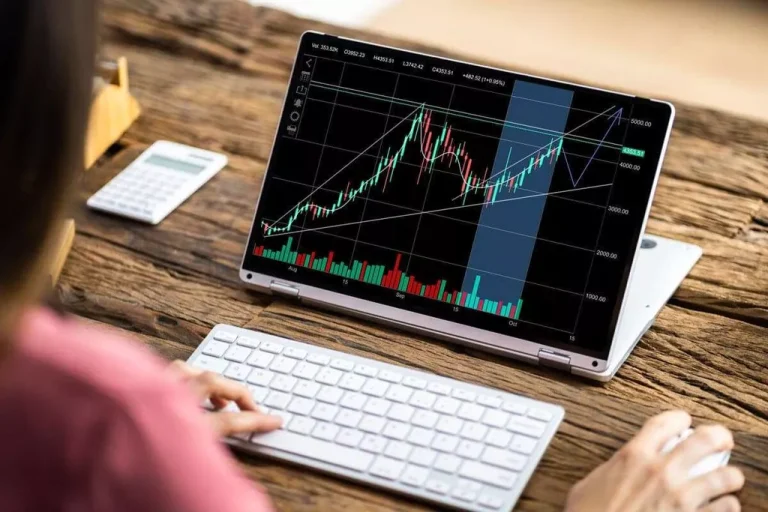Content
This balance makes them an attractive option compared to other asset classes. As with all forms of investment, putting is bitcoin a security or commodity your money into either commodities or securities has pros and cons. Commodities, for instance, offer better inflationary hedges, while securities are better at steady compounding. Some highly traded commodities, like oil and gold, can exhibit liquidity comparable to blue-chip stocks, while less-traded commodities and small-cap securities may face limitations. The distinction between commodities and securities from a regulatory perspective has evolved over many decades alongside the development of derivatives and financial markets.

Disadvantages of investing in securities
You can buy dividend stocks and receive quarterly cash distributions just for holding onto your shares. You can also sell covered calls and cash-secured puts to realize additional cash flow from your portfolio. Regulatory bodies like the US Commodity Futures Trading Commission (CFTC) often view stablecoins as Commodities, subjecting them to Commodities regulations. Stablecoins play a vital https://www.xcritical.com/ role in Cryptocurrency ecosystems, bridging the gap between traditional finance and digital assets while providing stability and liquidity for traders and investors. A commodity can become a security if it meets the definition of an investment contract under the Howey Test. The Commodity Exchange Act (CEA) regulates the trade of commodity futures in the U.S.
What Is the Difference Between Stocks and Securities?
Commodities are tangible resources that have held value Proof of space for thousands of years. Gold, water, crops and livestock have been essential and are likely to retain that status. They are intangible, and an investor depends on a company’s performance, good macroeconomic conditions and other factors.

Commodities Trading: An Overview
They are inputs in the production of other goods and services, rather than finished goods sold to consumers. The articles and research support materials available on this site are educational and are not intended to be investment or tax advice. All such information is provided solely for convenience purposes only and all users thereof should be guided accordingly. For information pertaining to the registration status of 11 Financial, please contact the state securities regulators for those states in which 11 Financial maintains a registration filing. 11 Financial is a registered investment adviser located in Lufkin, Texas.
Pros and cons of investing in securities
There is no one-size-fits-all answer for cryptocurrencies since there are several types of tokens; depending on the nature of the blockchain and token, they may or may not pass the Howey Test. This last criterion measures how much the success of the investment depends on the effort of other individuals apart from the investor. An example that meets this criterion is investing in a web3 startup, where the success of your investment depends mostly on the team and managerial expertise behind the project. For example, investing in a token because you expect an upward price movement to increase qualifies as an expectation of profits.
These investors have a chance at recouping some or all of their principal. Stockholders are at the bottom of the pecking order and often end up losing their entire investment if the company goes bankrupt. This guide will cover different types of commodities and securities and what to consider before getting started. Virtual Assets are volatile and their value may fluctuate, which can lead to potential gains or significant losses.
Either way, they gain some predictability and can budget for the future accordingly. Agricultural commodities include corn, soybeans, wheat, rice, cocoa, coffee, cotton, and sugar. For investors interested in the agricultural sector, population growth—combined with limited agricultural supplies—could provide profits from rising agricultural commodity prices. During periods of market volatility or bear markets, many investors put their money into precious metals, particularly gold, because of their status as having reliable value. Investors also do so to hedge against high inflation or currency devaluation.
This case resulted in a list of criteria—known as the Howey Test—to determine whether instruments should be regulated as a security. According to federal laws, a financial contract meets the threshold of a security if there is an investment of money made in a common enterprise in anticipation of a profit driven by the efforts of others. Early on, farmers and merchants relied on forward contracts to manage costs when there were problems in supply chains. Try Wealthsimple Trade, which lets you buy and sell stocks from the palm of your hand.
An investor’s decision should also consider the tax implications of investing in commodities or securities, as these can vary depending on the investor’s country of residence. These could be shares in a company, bonds issued by governments or corporations, or derivative products linked to various underlying assets. From a speculative standpoint, derivatives such as options and futures provide opportunities for significant profits, albeit with higher risk. The Chicago Board of Trade (CBOT), for instance, sets stringent standards for what can be traded under a specific commodity designation.
Companies keep cash on hand to make payments or take advantage of opportunities. Instead of parking the money where it won’t earn interest, they invest a portion of the cash into short-term liquid securities. Securities are listed on the stock exchanged and can be bought, sold, or traded on the secondary market. Additionally, to uphold orderly trading, equities exchanges implement automatic halts on shares whose prices rise or fall past defined thresholds within a five-minute window. These “limit up, limit down” bands pause trading briefly before resuming, regulating volatility. Another example is the SEC’s Regulation on Fair Disclosure, which enforces simultaneous public dissemination of material company events rather than allowing insiders early access.
- However, mutual funds and ETPs offering exposure to commodities or commodity futures are typically registered as securities and so are eligible to be covered by SIPC.
- The interest payments are fixed in value and paid out periodically until maturity when the principal is returned.
- Equity securities are most often shares of a publicly traded company stock.
- Securities represent ownership in a company or entity and are subject to stringent regulations aimed at investor protection.
- Securities tend to enjoy more widespread exchange availability and near-continuous price discovery.
T-bonds are another type of fixed-income security backed by the U.S. government. Investment grade bonds are issued by companies and governments at a low risk for default with corresponding lower returns. Junk bonds offer higher returns to account for the higher probability of default by the issuers. These ratings tell investors how likely it is for a corporation or a government to repay a bond. Bonds are divided into investment grade and non-investment grade, also called junk bonds. Let’s review the different types of securities and how they make—and occasionally lose—money for investors.
Commodity markets deal in metals (aluminum, copper, gold, lead, nickel, silver, zinc, etc.) and “soft” items (cocoa, coffee, sugar, oil, etc.). Furthermore, traders buy crypto assets for speculative purposes, thus matching with commodities as they, too, work price speculation. Similarly, another strong argument for placing cryptocurrencies in the commodities bucket is their decentralized nature. Since there is no centralized mechanism in the crypto industry, it is close to commodities.
Hard commodities are mined or extracted, while soft commodities are produced through agriculture.
Some commodities, like electricity, do not have a tangible physical form but can still be traded as commodities based on their supply and demand. Commodities typically have supply limitations, and each unit is interchangeable with other units of the same commodity. Among ETPs providing access to commodity futures, several different product structures may be used—and these can have implications for investors with respect to regulatory protections, costs and tax treatment. Both mutual funds and ETFs that invest in commodity futures are typically registered with the SEC as investment companies. They often employ a subsidiary through which futures trading is done, which can simplify tax treatment for investors but also add some complexities.
For example, investors interested in the oil industry could put their money into oil drilling companies, refineries, tanker companies, or diversified oil companies. Those interested in the gold sector can purchase stock in mining companies, smelters, refineries, or any firm that deals with bullion. Speculators in commodities tend to be sophisticated investors or traders who purchase assets for short periods and employ certain strategies to profit from price changes. Speculative investors hope to profit from changes in the price of the futures contract.

